
To the place where "good design" was created
Good design, excellent design, design that opens up the future, ideas that move people's hearts, and actions that lead society always have small beginnings.
Interviews with designers at the birthplaces of good design to find hints for the next design.
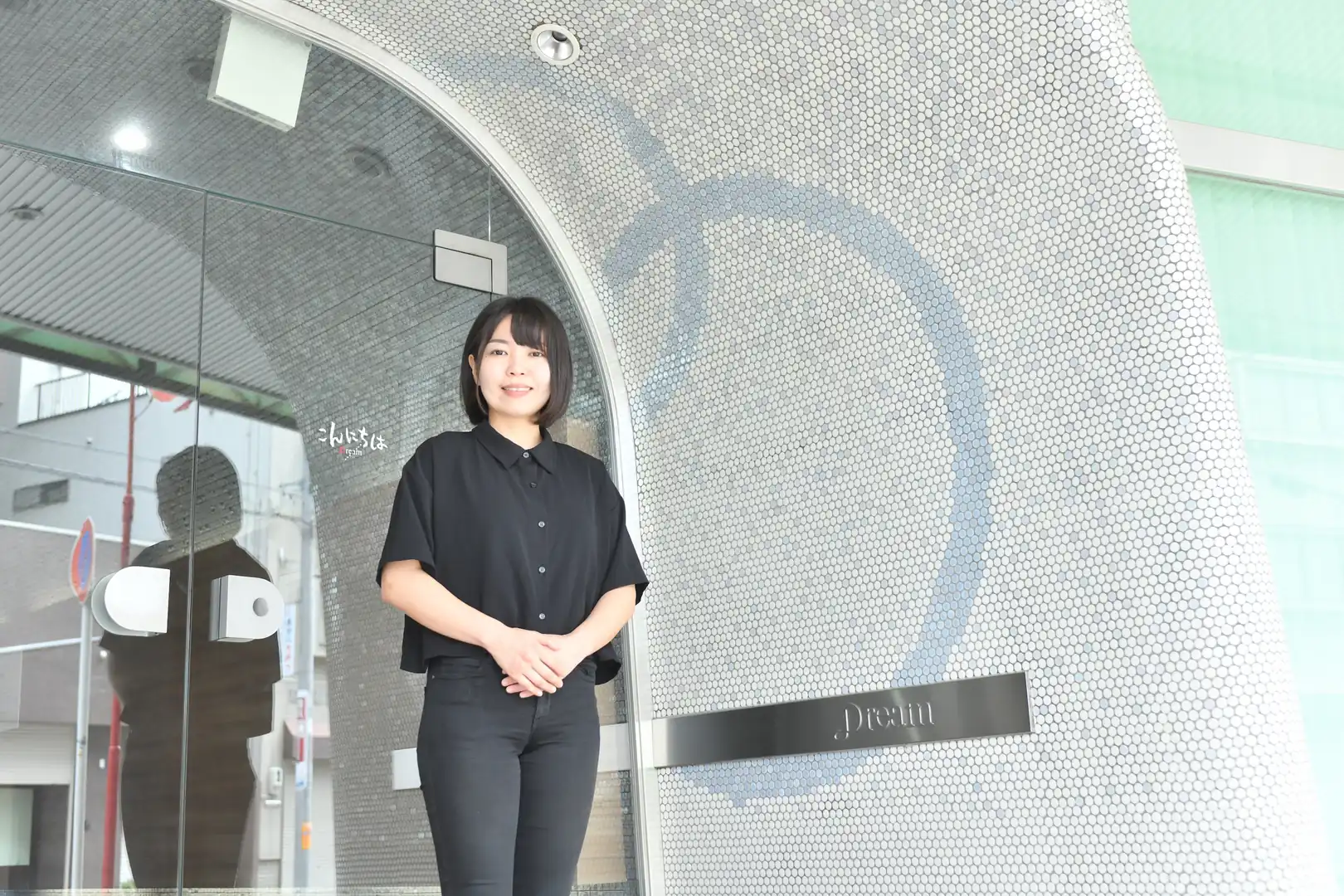
Destination
Dream, Inc.
Giving shape to “what you love” (Part 1)
2023.10.16
This time, we visited Dream, Inc., which is headquartered in Nagoya City, Aichi. Their product “SONAENO cushion type multifunctional sleeping bag” was selected for the GOOD DESIGN BEST 100 in 2021. This cushion-type sleeping bag can be used in a lounge all the time, and is ready for emergency use. A disaster prevention item that can be used in everyday life is something that seems unlikely. How did you come up with this idea? We talked to Momo Ishikawa, the developer of this product.
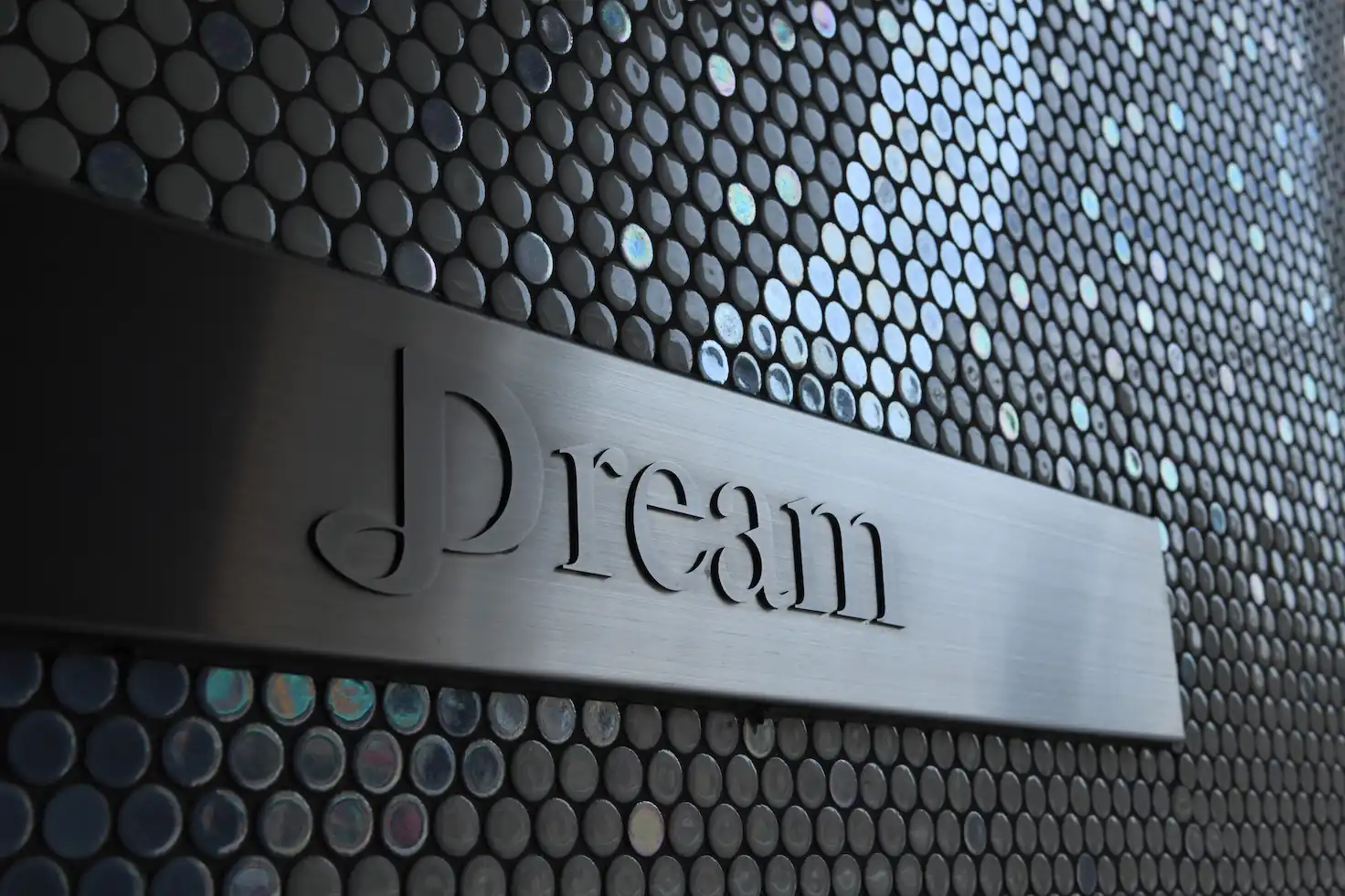
If there is a need, we can give it a try
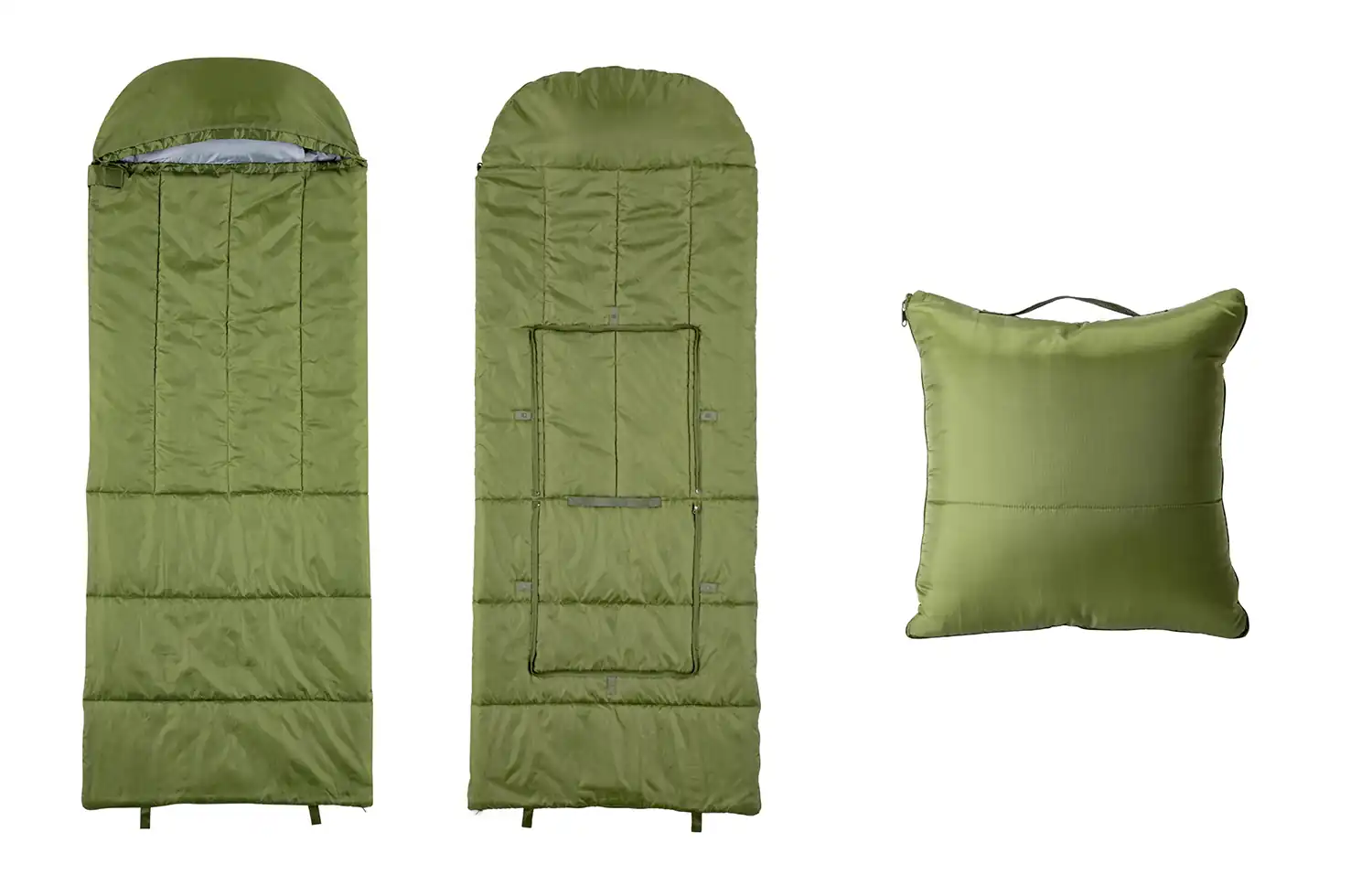
— I heard that there hadn’t been sleeping bags for emergency use on the market. What made you think of developing emergency supplies? As this area requires a lot of expertise, I had assumed that an experienced employee was in charge of the product planning. How many years have you been working for the company?
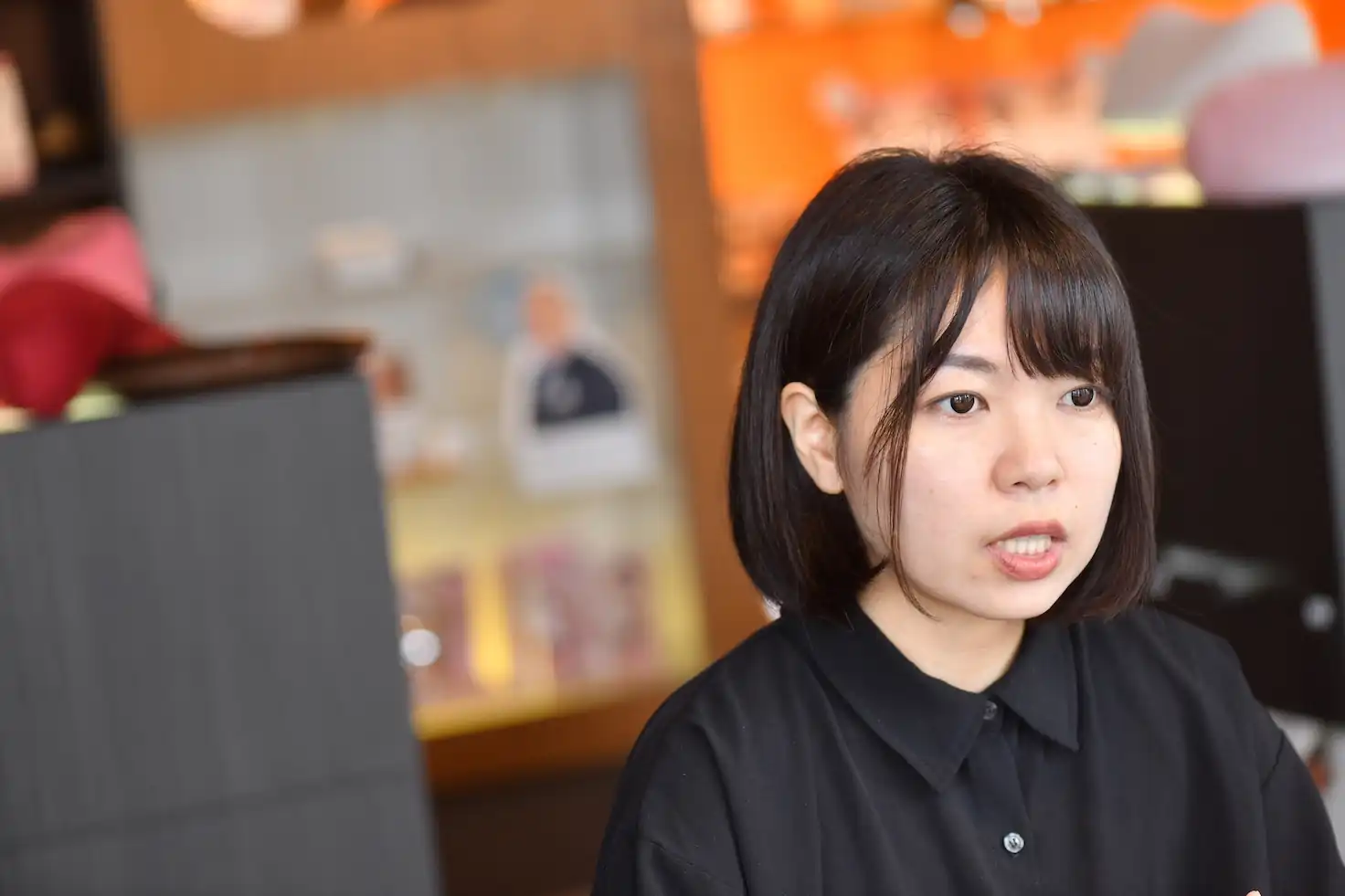
Momo Ishikawa This is my ninth year here. To begin with, I love emergency supplies, and was hoping to be in charge of planning of them since I’d joined this company. Our company Dream develops beauty, health, and handy goods, and therefore had no emergency supplies before I joined. But at the company information session I attended before graduation, I heard that they would develop items without restriction as long as there is demand and a sales floor. So, I thought I would be able to make disaster supplies with them and decided to join this company.
Emergency supplies are reliable, must-have items
— So, you love disaster supplies. That sounds a little unusual.
Ishikawa I have loved emergency supplies since elementary school. I was crazy about them to the extent that I spent all my pocket money and New Year’s money on them. Meanwhile, my friends spent their money on computer games (laughs). This predilection of mine started with the Y2K problem.
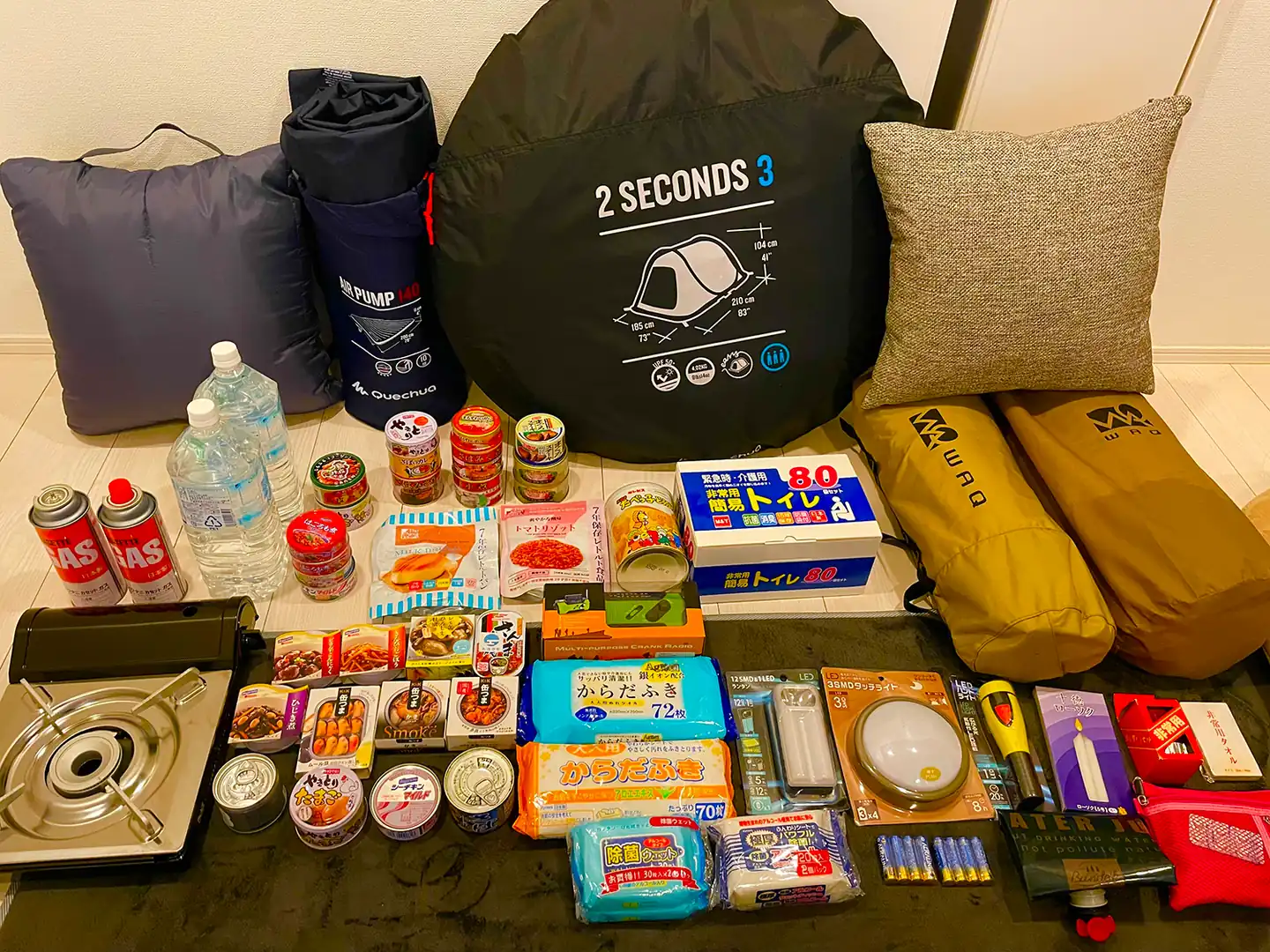
— There was a presumption that computers that stored year data in only two digits would cause chaos at banks and other institutions with the arrival of 2000 because of the inability to distinguish between 1900s and 2000s. The national government and the Red Cross also called for disaster prevention measures in the event of a crisis. I remember the panic that ensued in the public, compounded by the Nostradamus prophecy.
Ishikawa I was still in first or second year of elementary school, and had a sense of crisis that that earth would be destroyed, and it was scary and difficult. Even though I was young, I felt that I had to stock up on emergency goods, so I went to Tokyu Hands and found a section called “Preparation for Y2K.”
At that time, there were not many types of emergency supplies available, and therefore food and water were main items. Still, there were a variety of items, such as rice cakes that can be softened with water, towel tablets that expands when water is added, 24-hour candles, and water that lasts 10 years. I was excited to see these items. For me, they were like the ultimate must-have items. I was so passionate about collecting them. That is the origin of my passion.
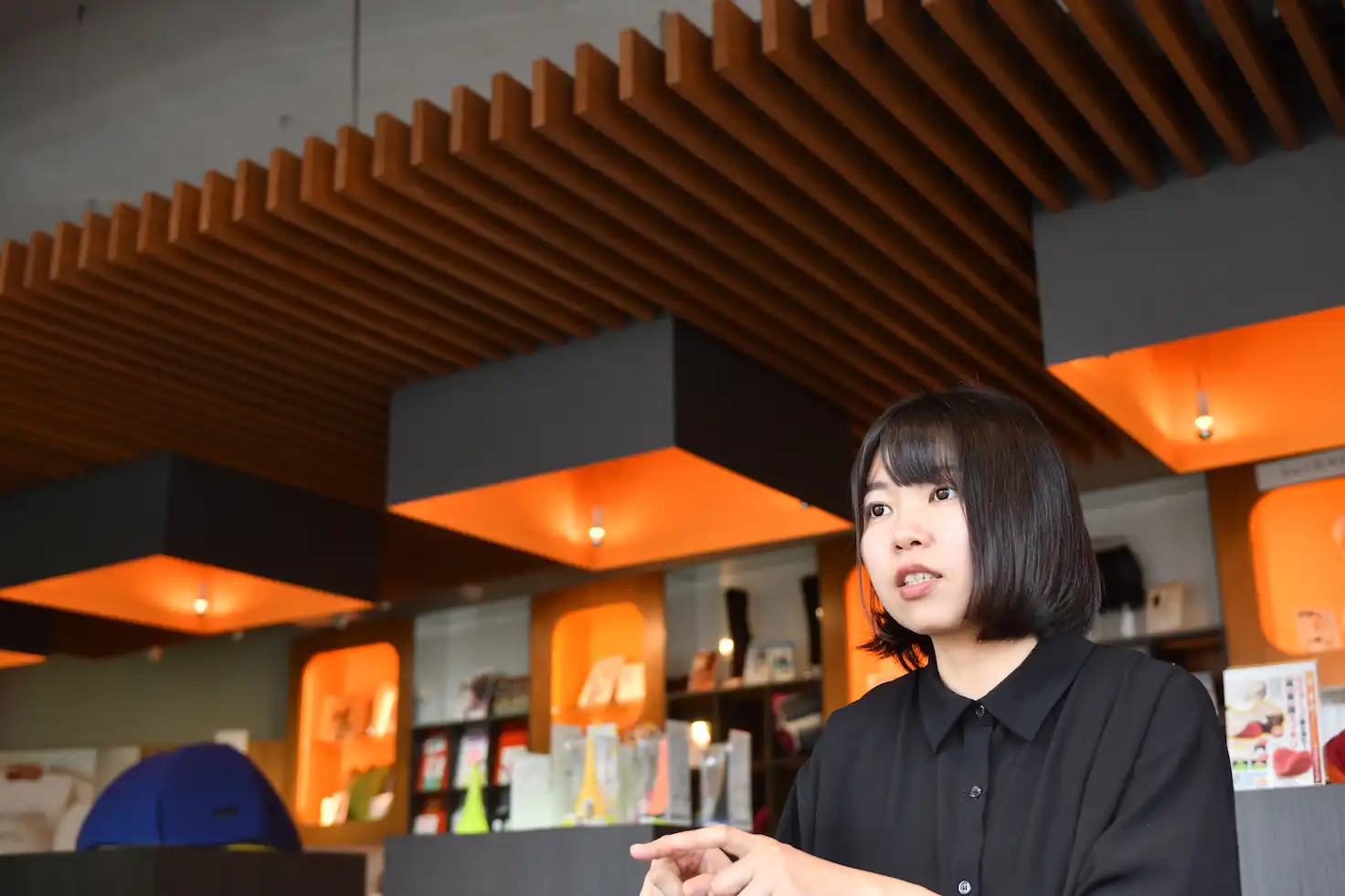
— Even though you are driven by your passion, developing practical items is not that simple. I would imagine that you faced many challenges.
Ishikawa I did, indeed. Since my first year here, I brought many ideas to the table, but none of them got approved. The reason is that I had no idea what was demanded in the market.
There were already many types of food, lighting, and other emergency supplies made by big companies on the market, and so there was little room to enter in the same area following them. I had many ideas I wanted to tackle, but only received critical reviews at the meeting pointing out excessive initial costs or an uncertain sales forecast as they are hardly seen in public.
Fusion of everyday life and emergency supplies
— Large companies can mass-produce these items at low cost. But entering the market is difficult for companies that produce in small lots.

Ishikawa Then I came up with this idea. I have bought all kinds of emergency supplies because I love them so much. But friends of mine who are indifferent to disaster prevention grumble, “Why are they needed?” “Why would I pay for something I never know when I will be able to use?” or “Where can I store a large emergency kit in the first place?” In other words, I finally realized that there are many related issues.
When we like something, we buy it, no matter what design it has or even if it is a little expensive. But how can we convince someone who is not interested in an item to buy it? Therefore, I had another look into the emergency supplies market. Then I found out that there is a market for emergency supplies that can be used daily, such as stylish disaster prevention or emergency supplies for everyday use.
I was thrilled. I also realized that there are more possibilities for emergency goods. I visited many show homes to consider what sort of emergency supplies would suit ordinary households, what type of design works well in the kitchen or bedroom, and other ways to cross everyday life and emergency supplies. Then, I came up with this sleeping bag. That was my fifth year at this company.
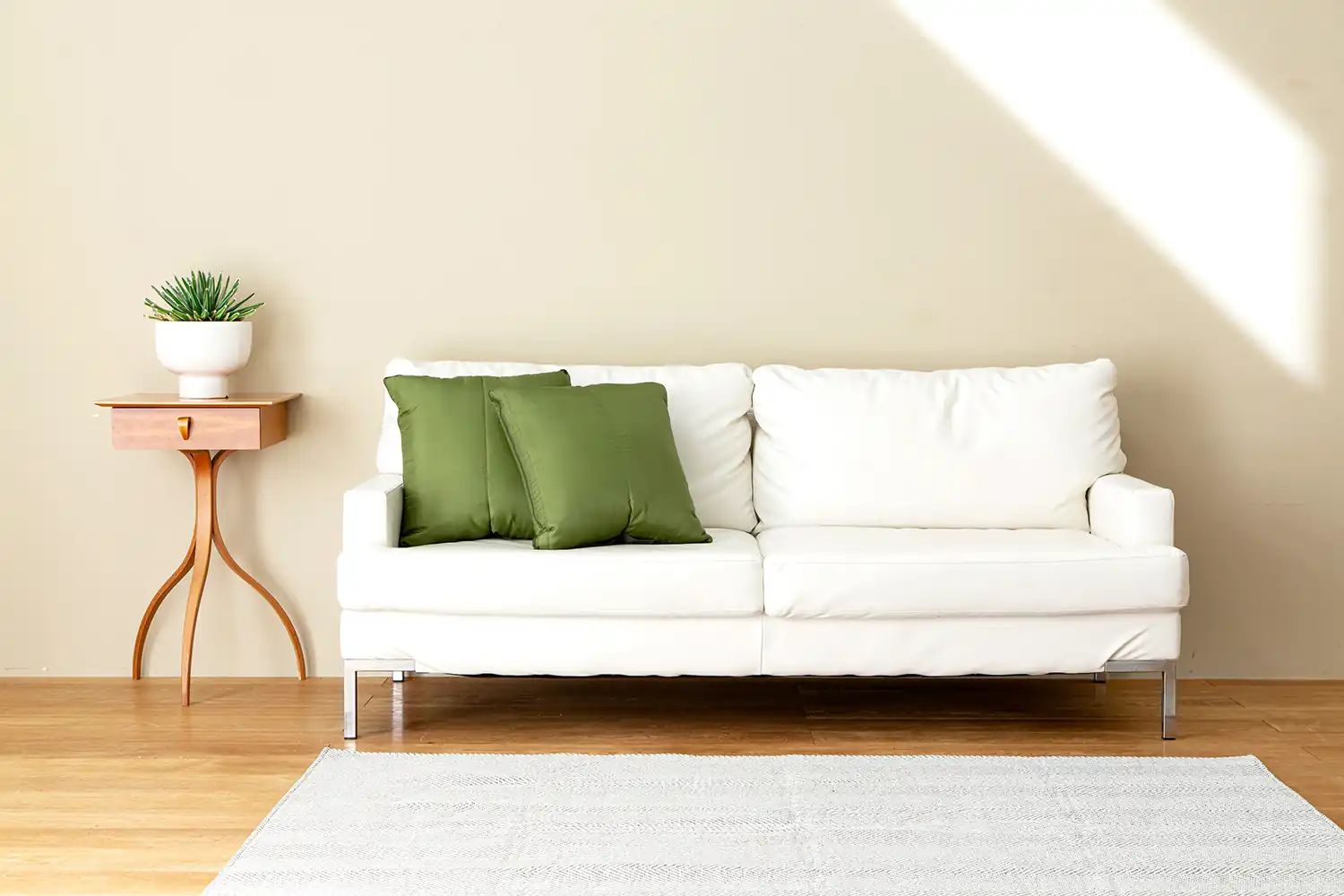
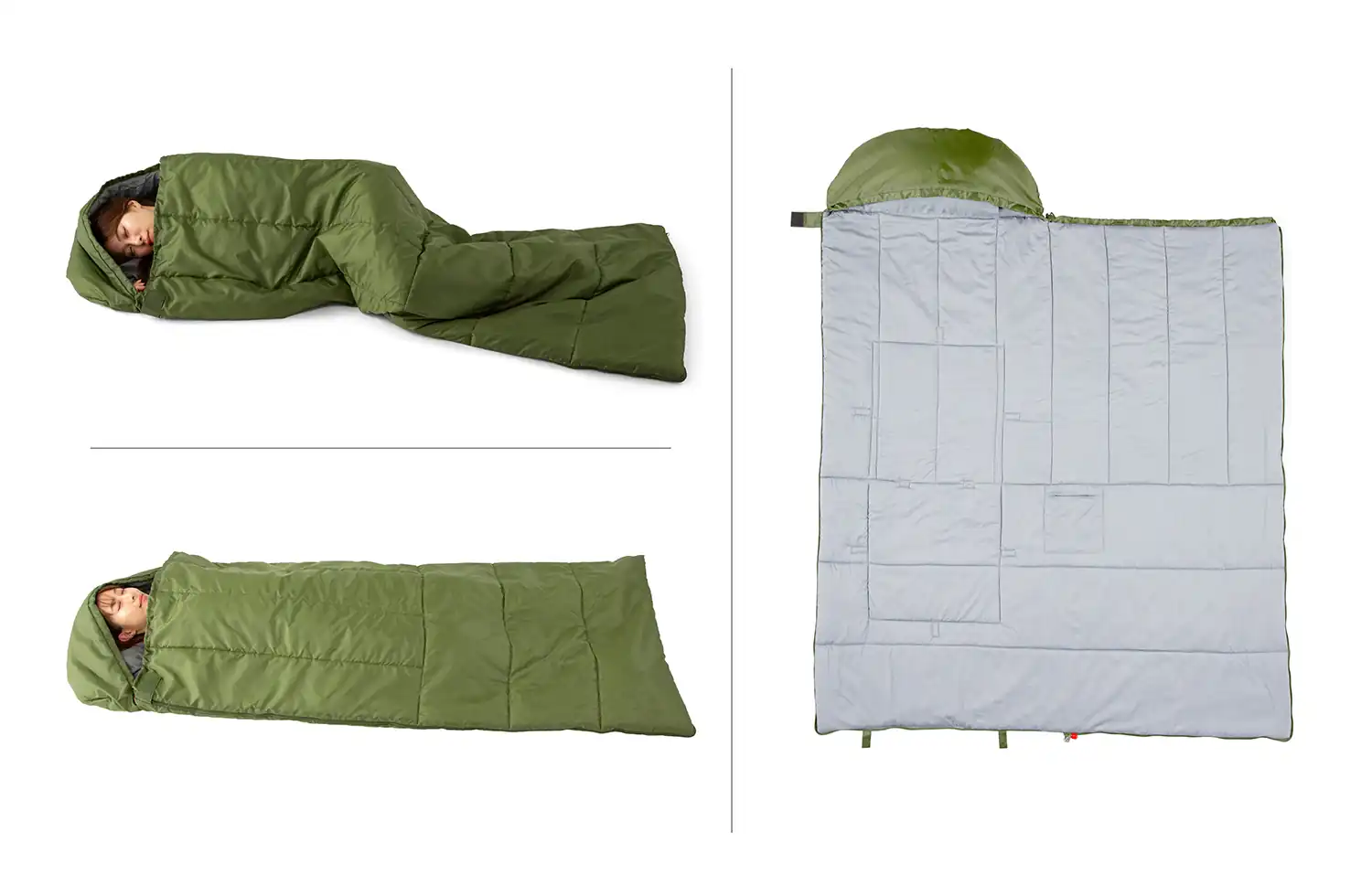
Key design points: The cushion-type design solves the problem of storing disaster prevention goods. By replacing emergency “living” with a familiar item, this product has succeeded in making people prepared on a daily basis. It is highly functional, as the design is based on knowledge of disaster prevention experts and disaster victims, and careful consideration was given to functionality when in use. The perspective of eliminating barriers between disaster prevention and everyday life was highly appreciated.
A niche in red oceans
How did you get to the all-in-one cushion-type sleeping bag?
Ishikawa I am in charge of marketing for TV shopping channels. One day, I told the buyer in charge of the program that I wanted to introduce emergency goods. Then, the person informed me that the emergency kits introduced on their TV shopping program comprise water, food, and backpacks with stuffed items, but no bedding. This served as a clue for me.
In fact, after doing some research, I found that emergency kits only included sleeping bags for camping and that there were no sleeping bags specifically designed for emergency use with attention to every detail. I myself like to go camping and own a sleeping bag, but folding a sleeping bag for outdoor use is not easy. Such sleeping bags come with several other disadvantages when it comes to using them in emergency situations.
At the same time, I thought about how to accommodate a sleeping bag at home, and the idea of making “cushion” hit me. I may have got this idea while visiting show homes. I immediately investigated whether cushion-type sleeping bags were already on the market.
I found a few sleeping bags with a cover, but covers are easily lost in times of disaster. As the design would be spoiled without a cover, I started considering how to make a cushion shape without a bag.
— It was savvy of you to pick up on the words of the buyer from the TV shopping program and to come up with making a cushion straight away. I guess that is because you have been pondering about emergency supplies daily. How did you obtain your expert knowledge?
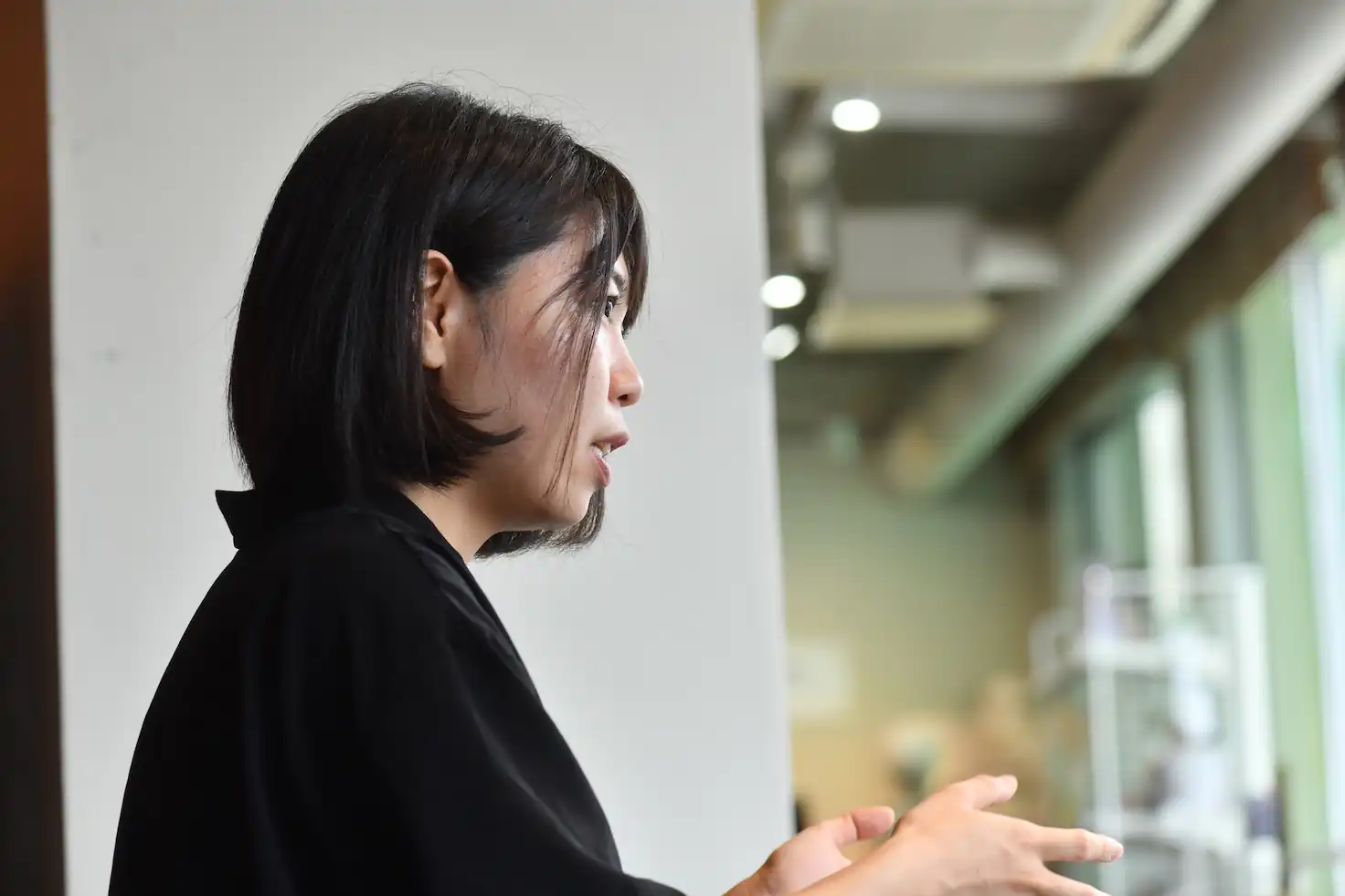
Ishikawa Our company has always been making products with robust cooperation among manufacturers, experts, and customers. For example, we invite sleep specialists to work with us when we develop pillows.
About five years ago, I contacted Mr. Tomoya Takani, a disaster prevention advisor and the president of Sonaeru Works, and invited him to work with us in the development of this product. Unfortunately, my ideas still kept failing to pass in-house meetings. Mr. Tanani advised me “not to rush.”
— When you put out the idea of a sleeping bag, how did the experts react?
Ishikawa To tell you the truth, initially I received feedback that there was demand but making it would be quite difficult. According to them, “the market to which sleeping bags belong is already a super red ocean,” as major outdoor gear manufacturers have released highly functional sleeping bags for various purposes.
Many brands have sleeping bags for mountaineering that work fine in freezing temperatures. Therefore, newly entering the market to make sleeping bags would be difficult.
But I insisted, “No, no, there is no sleeping bag that can also be used in everyday life. What’s more, there is no sleeping bag focusing on disaster prevention on the market yet.” Then, they understood. I also did a lot of research.
Our development department and manufacturing factories we contracted with also gave us a lot of advice. To make it 45 cm by 45 cm, we finalized the product by improving it little by little. It is a standard cushion size and can be used with a cover you like.
Finding the point you can be confident about
— You believed that there should be sleeping bags that are more convenient in times of disaster because many of highly-functional, high-grade products already on the market aren't necessarily suitable for use during a disaster. Even in a so-called red ocean, you can find some points overlooked by others. It’s a real eye-opener.
Ishikawa At the beginning, the buyer from the TV shopping program didn’t seem to be very impressed. In addition to serving as an all-in-one cushion, this sleeping bag comes with a hood, pillow, pockets to store valuables, and many other functions useful in times of disaster. But all these features themselves are not that uncommon. Therefore, I emphasized that the main strength of this product is integration with lifestyle to persuade them.
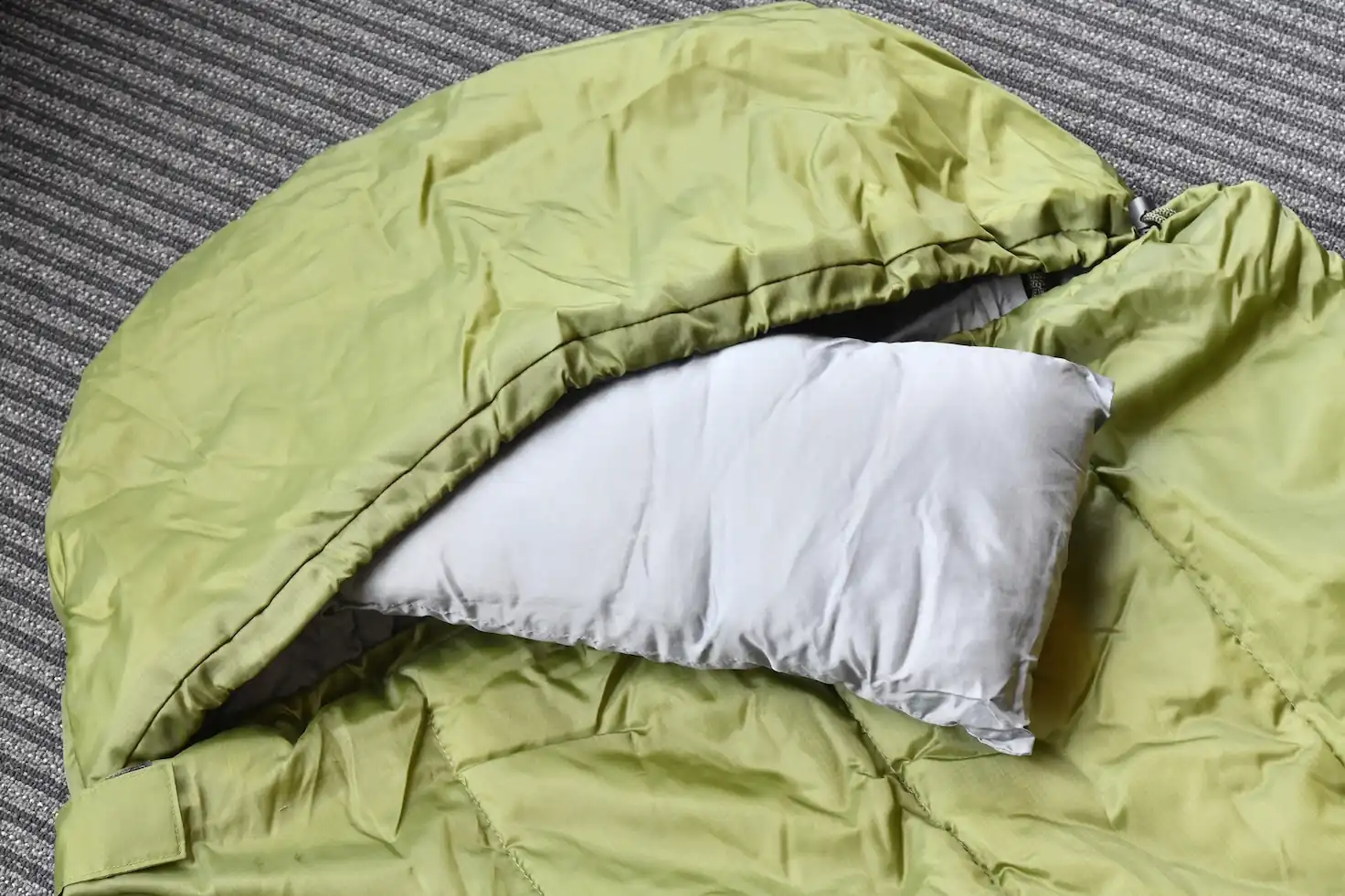
— You swayed the reluctant experts and buyer with your passion.
Ishikawa I’m really proud of myself for not giving up when my idea was rejected at the beginning, unlike when I was a new employee (laughs).
In fact, I gave up many of my ideas because I received opposing opinions, feeling I couldn’t do something. But this time, I carried my point with a stronger will, as I am passionate about emergency supplies.
Finding out for myself what could be a unique product and discussing it with my colleagues, experts, and customers worked in my favor. The project progressed fast after I conveyed my intention to them. While some products take two to three years before completion, this item was completed in about 11 months.
— You mean, it is important to find the point that you are confident about.
Ishikawa That’s right. I believed that this was going to be successful no matter what others said. In fact, the reaction from my colleagues improved as the product overcame drawbacks one by one and got close to a completion. At the beginning, they just said “hmm” indifferently, but their response gradually changed, from a rather positive “sounds good” or “it might sell” to pleasant comments like “I would want this.” That was when I was convinced that this was going to be a success.
A smash hit after release
— What reactions did you get from users?
Ishikawa We had a great response. A total of 57,000 units were sold in about two and a half years since its release. The response on TV shopping was particularly strong. I assume users also found it to be something that wasn’t previously available.
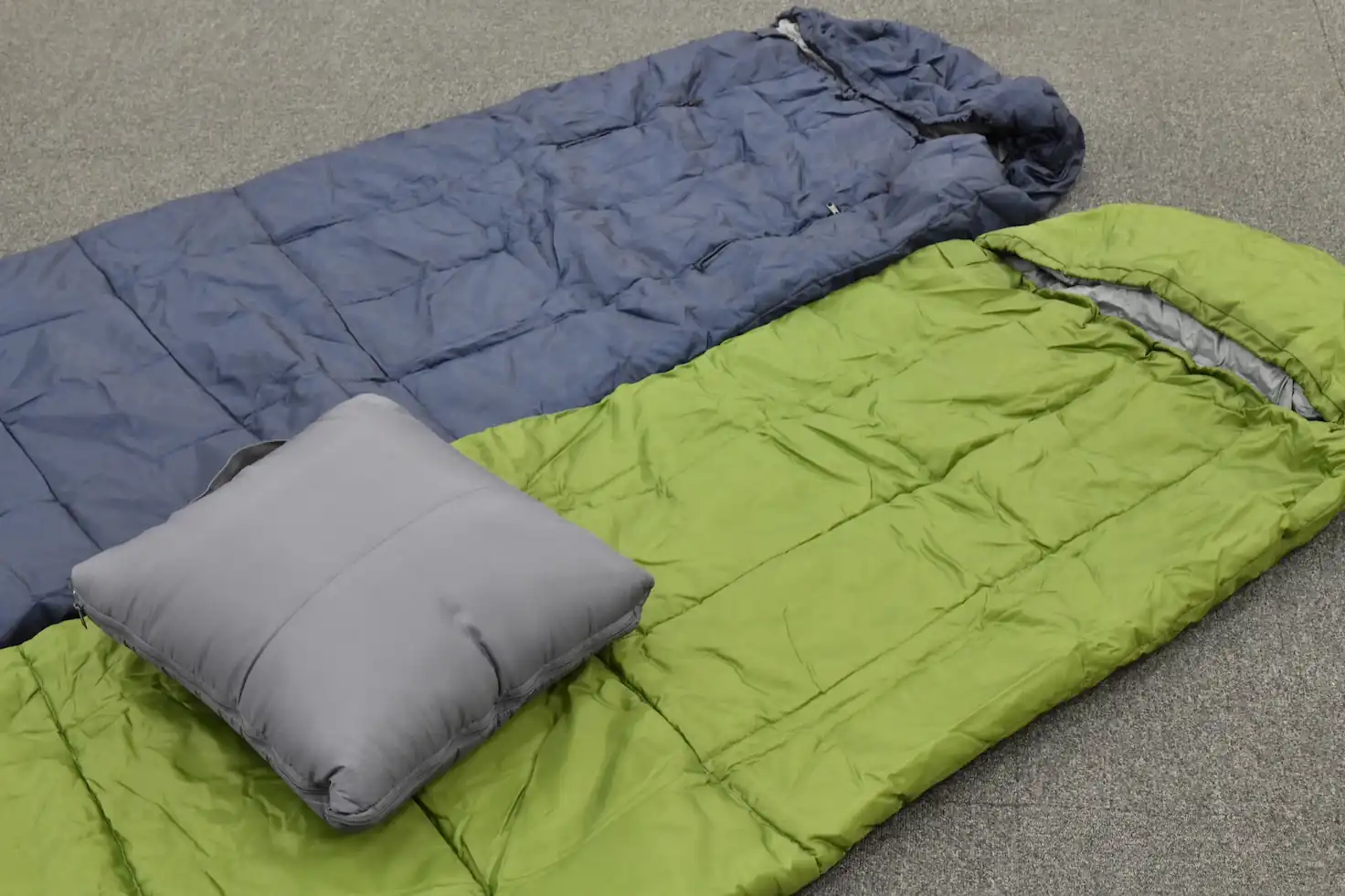
— I assume many people would purchase several sleeping bags for their families as they are to be used during disasters.
Ishikawa On average, each person purchased two sleeping bags. According to a survey of disaster victims, the hardest part at the beginning of evacuation life is the lack of secure sleeping environments. This is because they typically have to sleep in a tiny space on the floor of a gymnasium or a similar building with many other people.
In the TV shopping program, the host explained the product, saying, “Can you let your parents sleep on the hard floor of an evacuation center? I can’t. That is why I gave this to them.” This is correct: a sleeping bag is a must-have item during a disaster. Some people also purchase another sleeping bag for their daughter, mother, or other family member.
— That is touching.
Ishikawa Yes, I feel very honored as a planner. I have also received comments from customers saying it is great as a present as they can use their favorite cushion cover. If someone gives you an emergency kit all of a sudden, you probably would be confused.
At first, I was thinking of using fabric with fancy patterns to make a cushion. But Mr. Takani advised me that women and children are more likely to be victims of crime in evacuation centers. He pointed out that if they use pink or flower-patterned sleeping bags, others can easily spot that they are women or children. Therefore, it should look genderless.
I hadn’t considered that. So, I continued to discuss the specifications with Mr. Takani after that. I decided the functions or usability based on his advice on various points. But if I followed every single piece of advice, it would turn out too costly or unable to work as a cushion. Therefore, I carefully selected what to include one by one.
Working on what she loves, bringing into the world a totally new product, and making it a hit. Ishikawa’s story may sound like a Cinderella story. But there were many challenges she had to face every day behind her success. In Part 2, she reveals a behind-the-scenes story of the product development.
SONAENO cushion type multifunctional sleeping bag
Dream, Inc.
In Japan, a major disaster-prone country, various products to “prepare” for disasters are on the market; however, such supplies are often stored away and out of reach in times of emergency. SONAENO is a new brand that proposes preparation for disasters in a way that is adapted to everyday life, and developed cushion-type multifunctional sleeping bags in cooperation with disaster experts. This product can be used as a cushion daily, and as a sleeping bag that provides a secure sleeping environment during times of disaster. It was highly appraised for proposing a new idea combining the necessary functions of preparation for disasters and everyday use. https://www.mydream.co.jp/
- Award details
- 2021 GOOD DESIGN BEST 100 “SONAENO cushion type multifunctional sleeping bag” https://www.g-mark.org/en/gallery/winners/9e4a19f1-803d-11ed-af7e-0242ac130002
- Producer
- Dream, Inc. CEO/ Hideo Ohashi
- Director
- Dream, Inc. TV media planning Department/ Momo Ishikawa
- Designer
- Dream, Inc. R&D Product designer/ Mayumi Mishima
Tomoko Ishiguro
Editor/writer
After working in the editorial department of “AXIS,” she became a freelancer. She writes, edits, and plans, with a focus on design and life culture. Her major editorial works include LIXIL BOOKLET series (book, LIXIL Publishing) and “Oishisa no Kagaku” (magazine, NTS Publishing).
Kiyoto Wakabayashi
Photographer
He studied design in high school. After graduating from junior college, he worked at a design office and photo studio, then became independent in 1999. He works with clients in multiple domains, including advertising, and takes a wide range of photos in various genres.


